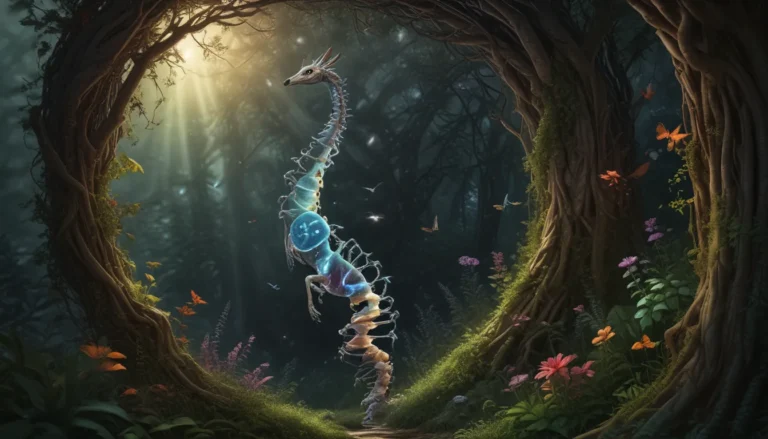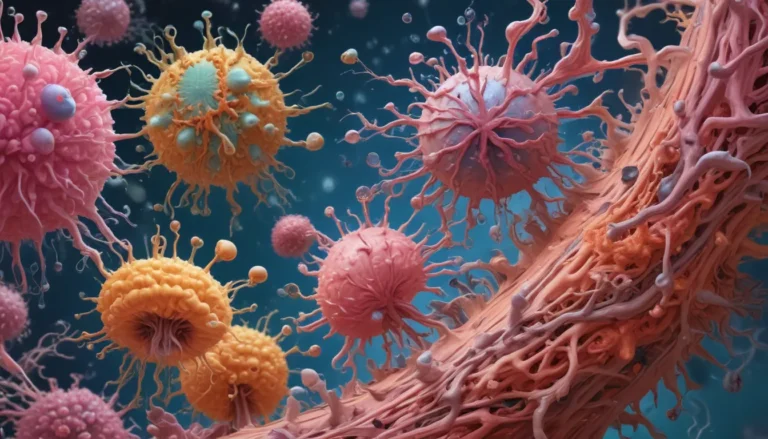A Note About Images: The images used in our articles are for illustration purposes only and may not exactly match the content. They are meant to engage readers, but the text should be relied upon for accurate information.
As we delve into the captivating realm of biology, one concept that stands out is ectothermy. Ectothermy involves organisms relying on external sources of heat to regulate their body temperature. Unlike endothermic creatures like mammals and birds, ectotherms do not generate their own body heat but instead depend on the environment for warmth. This unique adaptation can be observed in a diverse range of organisms, from reptiles and amphibians to insects and fish.
Unveiling the Wonders of Ectothermy
Let’s embark on a journey to uncover 19 captivating facts about these remarkable ectothermic organisms. From their diverse strategies for thermoregulation to their incredible resilience in extreme environments, ectotherms possess fascinating characteristics that make them worth exploring.
Understanding Ectothermy
Ectothermy is a biological phenomenon where organisms regulate their body temperature through external sources such as the environment or direct heat from the sun. This reliance on external heat sources sets ectotherms apart from endotherms, highlighting their unique adaptation to their surroundings.
Embracing the Diversity of Ectotherms
Ectotherms can be found in various taxonomic groups, including reptiles, amphibians, fish, and invertebrates. This diversity showcases the adaptability and versatility of ectotherms in various ecosystems and habitats.
Thriving in Extreme Environments
One remarkable aspect of ectotherms is their ability to adapt to extreme environments, ranging from scorching deserts to frigid arctic regions and even deep-sea habitats. This adaptability reflects the resilience and survival skills of ectothermic organisms.
Energy-Efficient Metabolism
Ectotherms have lower metabolic rates compared to endotherms, allowing them to conserve energy and survive on lower food intake. This energy efficiency is a significant advantage for ectotherms, particularly in environments with limited resources.
Behaviors for Temperature Regulation
Ectotherms exhibit a variety of behaviors to regulate their body temperature effectively. Whether basking in the sun to absorb warmth or seeking shade to cool down, these behaviors play a crucial role in maintaining optimal body temperatures.
Survival Strategies: Hibernation and Estivation
In adverse conditions, ectotherms employ hibernation in cold climates and estivation in hot climates to survive. These strategies enable ectotherms to endure extreme temperatures and environmental challenges while conserving energy.
Adapting through Coloration
Many ectotherms have the remarkable ability to change their skin color to absorb or reflect sunlight. This adaptation helps them regulate their body temperature and adapt to changing environmental conditions effectively.
Growth Rates and Adaptations
Ectotherms generally have slower growth rates compared to endotherms due to their reliance on external heat sources. This unique adaptation influences the growth and development of ectothermic organisms in diverse ecosystems.
Ecological Significance: Predator-Prey Dynamics
Ectotherms play a crucial role in predator-prey dynamics, influencing population sizes and ecosystem balance. Their presence and interactions contribute to the biodiversity and ecological stability of various ecosystems.
Ectotherms: Guardians of Biodiversity
With their diverse adaptations and distribution across different ecosystems, ectotherms contribute significantly to biodiversity. Their presence and unique characteristics enhance the ecological balance and richness of natural habitats.
Longevity and Resilience
Certain ectotherms, such as tortoises and reptiles, exhibit exceptionally long lifespans, with some living for over a century. This longevity reflects the resilience and adaptability of ectothermic organisms in challenging environments.
Metabolic Flexibility and Adaptation
Ectotherms have the remarkable ability to adjust their metabolic rate to match environmental conditions. This flexibility allows them to survive in changing habitats and adapt to fluctuations in temperature and resource availability.
Facing the Challenges of Climate Change
Climate change poses significant challenges for ectotherms, as alterations in temperature can disrupt their physiological processes. Understanding the impacts of climate change on ectothermic organisms is crucial for conservation efforts and ecosystem management.
Parental Care and Nurturing Behaviors
Several ectotherms, including certain fish and reptiles, exhibit parental care behaviors such as guarding eggs and protecting offspring. These nurturing behaviors contribute to the survival and well-being of the next generation of ectothermic organisms.
Varied Feeding Habits
Ectotherms display a wide range of feeding habits, including herbivores, carnivores, and opportunistic feeders. Their diverse diets reflect their adaptability to different environments and their role in ecological food chains.
Water Conservation Strategies
Ectotherms residing in arid environments have evolved mechanisms to minimize water loss and survive with limited water resources. These water conservation strategies are essential for ectotherms to thrive in challenging habitats.
Ecological Interactions: Prey, Pollinators, and Scavengers
Ectotherms serve vital roles in ecosystems as prey for predators, pollinators for plants, and scavengers that contribute to nutrient cycling. Their interactions play a significant role in maintaining ecosystem balance and functioning.
Regeneration Wonders
Many ectotherms possess remarkable regenerative abilities, allowing them to regenerate limbs, tails, or even entire organs. This regenerative capacity showcases the remarkable healing and survival abilities of ectothermic organisms.
Ectothermy in Scientific Research
Ectotherms are subjects of extensive study in fields such as ecology, physiology, and evolutionary biology. Their unique adaptations and behaviors provide valuable insights into biological processes and contribute to our understanding of the natural world.
Appreciating the Marvels of Ectothermy
In conclusion, the world of ectothermy offers a fascinating glimpse into the intricate adaptations and survival strategies of diverse organisms. The 19 intriguing facts highlighted in this article shed light on the uniqueness and resilience of ectotherms in various environments. By exploring ectothermy, we not only gain a deeper appreciation for the natural world but also expand our knowledge of biological processes and ecological interactions.
Delving Deeper: Exploring the World of Animal Biology
Ectothermy’s captivating world invites us to delve deeper into the lives of reptiles, the intricacies of temperature regulation, and the role of metabolism in animal survival. Each facet of animal biology offers a unique perspective on adaptation, resilience, and diversity in the natural world. Whether you’re curious about cold-blooded creatures, fascinated by internal balance, or intrigued by metabolic marvels, there is always more to discover in the realm of animal biology.
FAQs
Q: What is ectothermy?
A: Ectothermy is a biological term describing organisms that regulate their body temperature through external heat sources, such as the environment or sunlight.
Q: Which organisms exhibit ectothermy?
A: Ectothermy is commonly observed in reptiles, amphibians, fish, and various invertebrates, including snakes, turtles, frogs, and insects.
Q: How do ectotherms regulate their body temperature?
A: Ectotherms rely on external sources of heat to regulate their body temperature, utilizing behaviors such as basking in the sun or seeking shade to adjust their internal temperature.
Q: What are the advantages of ectothermy?
A: Ectothermy offers advantages such as energy efficiency, adaptability to fluctuating temperatures, and survival in environments with limited resources.
Q: How does ectothermy differ from endothermy?
A: Endothermy involves organisms generating and regulating their body temperature internally through metabolic processes, allowing them to maintain a relatively constant temperature regardless of external conditions.
Q: Can ectotherms survive in extreme environments?
A: Yes, ectotherms have remarkable adaptability to extreme environments, with some species capable of withstanding freezing temperatures or thriving in harsh climates with minimal resources.
Join us on a journey of discovery as we delve into the fascinating world of ectothermy and uncover the marvels of these unique organisms. From their diverse adaptations to their crucial roles in ecosystems, ectotherms offer a wealth of insights into the wonders of the natural world. Explore, learn, and appreciate the remarkable world of ectothermy as we continue to unravel the mysteries of biology and the interconnectedness of all living beings.






